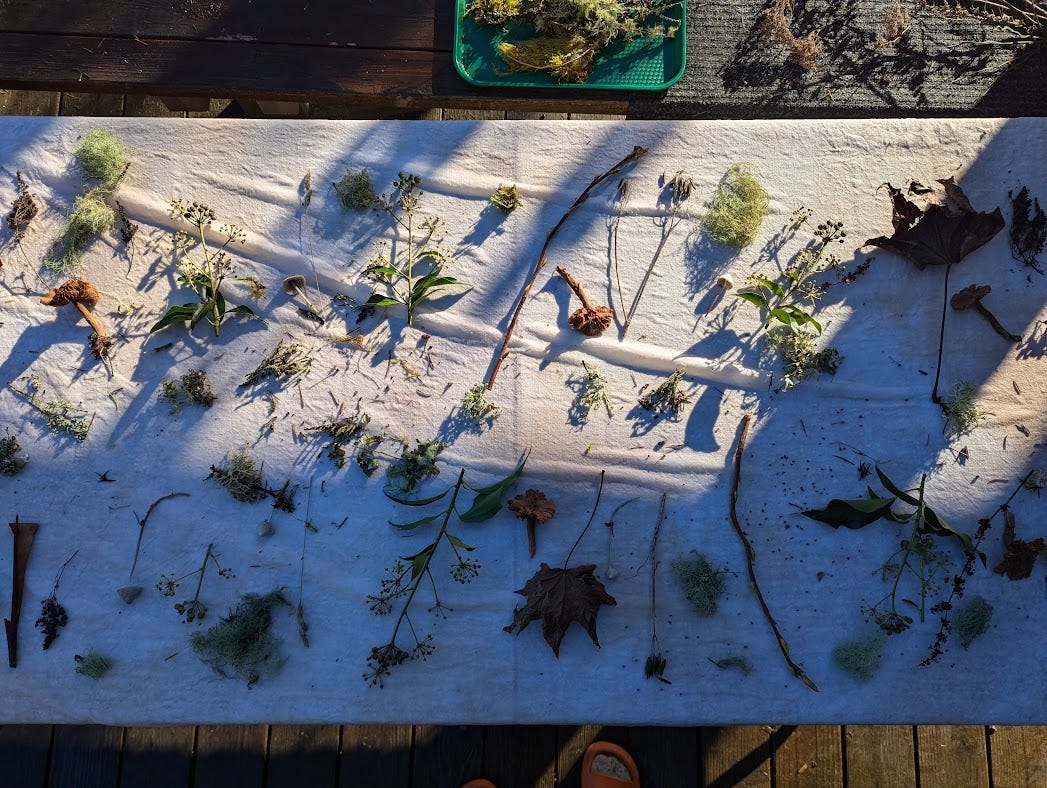Experiments with eco-printing and natural dyes
The surprising results of using winter organics to dye quilting fabrics
I am embarking on a new quilt project to submit to the Salt Spring National Art Prize (SSNAP), and the initial phase of that project was to explore using organic materials from around my home on Salt Spring Island.
This sounds great in theory, because Salt Spring is a land of abundance in the summer. Farms and flowers abound, and if I were harvesting plants during the height of summer, I’d have choice pick of nature’s most vibrant and dynamic ingredients. Except I was starting my plant-dye experiments in January, the middle of winter. The timing was non-negotiable, since the final piece will need to be submitted to SSNAP for consideration by May.
In early January, I set about my backyard to see if worthwhile materials could be harvested. Once I learned to peer beyond the seemingly-monotonous palette of evergreen and grey, I found a lot of promising materials: moss and lichens, leaves, winter berries, mushrooms, seed pods, and beyond. I was careful to pick already fallen materials, and only cut a few branches here and there. Much of what I found was dead and rotten, standing still in some stage of decay. I hoped for magical alchemy to take place in the pot, making these depleted materials into something new and lively.
I had no idea what to expect. I couldn’t predict what was going to happen. I just assembled ingredients, mapped out five experiments so I could test different variables, and crossed my fingers.
Here, I’ll share the results of two of those experiments (swatches #4 and #5), and exactly what I did to get there.
To start, I used a GMO-free flax linen fabric imported from Europe, where it was cultivated without irrigation. The weight is 165 GSM, which is nice to hand-quilt with. I pre-cut and then scoured the five swatches. I used a synthrapol and soda ash mixture, and calculated those amounts based on the total weight of fibre (WOF) of the dry linen.
I created a tannin bath using salal leaves and branches, which grow in abundance behind my house. I simply boiled these leaves in a large pot on my stove, strained, and then soaked the two fabric swatches in that liquid for 2 hours.
For swatch #4, after the salal bath I soaked the wet fabric in a rusty nail solution for one hour. (I made the solution weeks in advance: I collected rusty nails that had been left behind in the tool shed from the previous homeowners, and stored them in a glass jar with a 1:4 vinegar-water solution.) The iron from the nails would act as a mordant, allowing the plant matter to more efficiently grab onto the fibre.

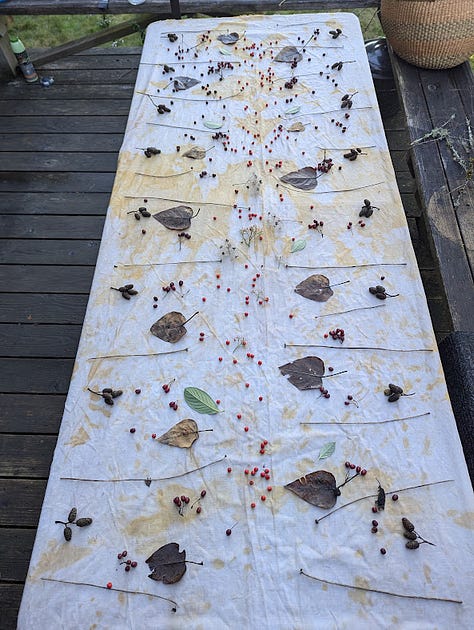

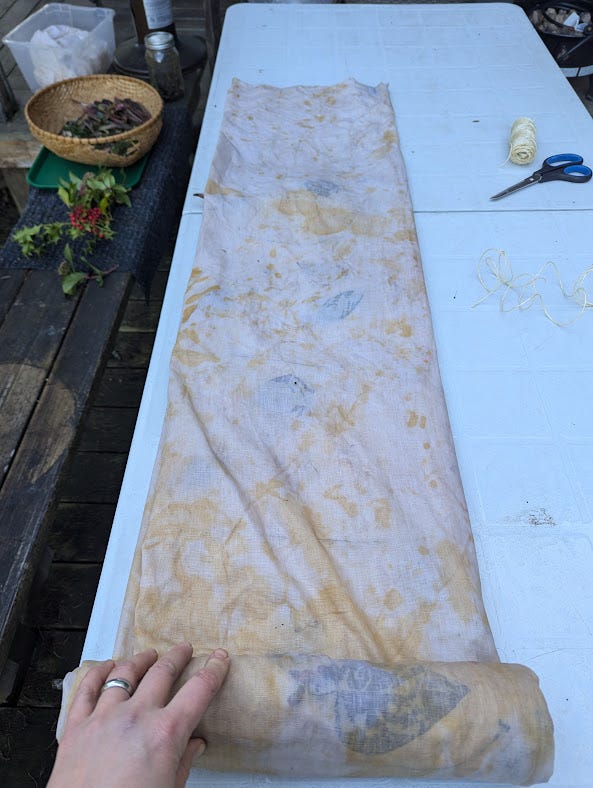
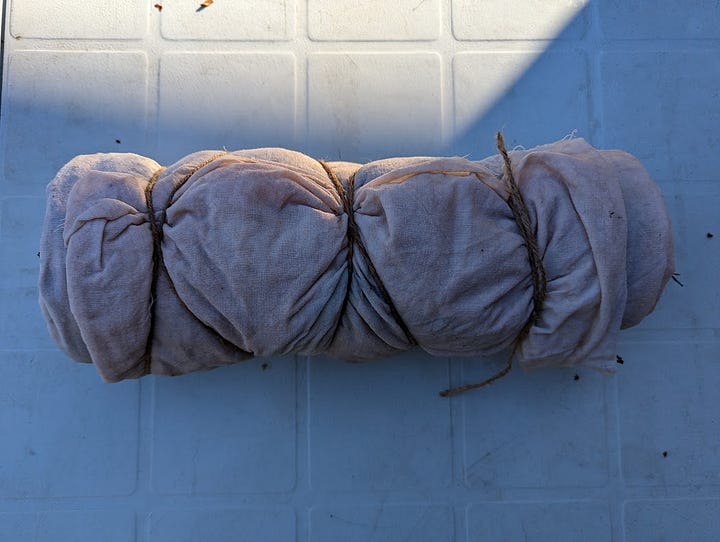
On this fabric I arranged two types of red berries, leaves, dead and dried up daisy flowers and stems, fluff pods, eucalyptus and arbutus bark, and rolled the bundle up around lichen-covered twigs. I secured tightly with twine and boiled the bundle in a large pot for 2 hours. I added a splash of vinegar to the pot.
For swatch #5, after the salal bath I soaked the wet fabric in a wood ash solution as mordant for one hour, which I made using ashes from our wood stove (I used 1 part wood ash, 2 parts water, let that sit for 24 hours, and strained. There was quite a bit of sooty material still in the water but I just went with it.)
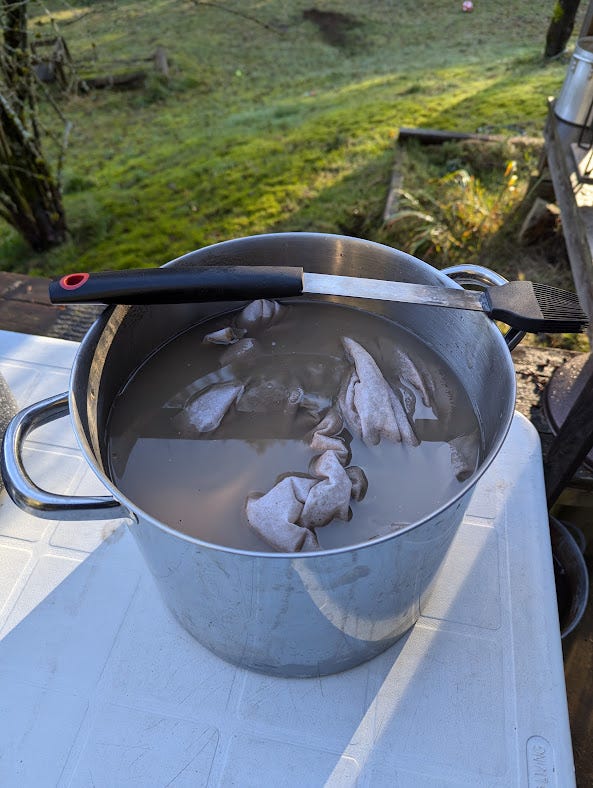
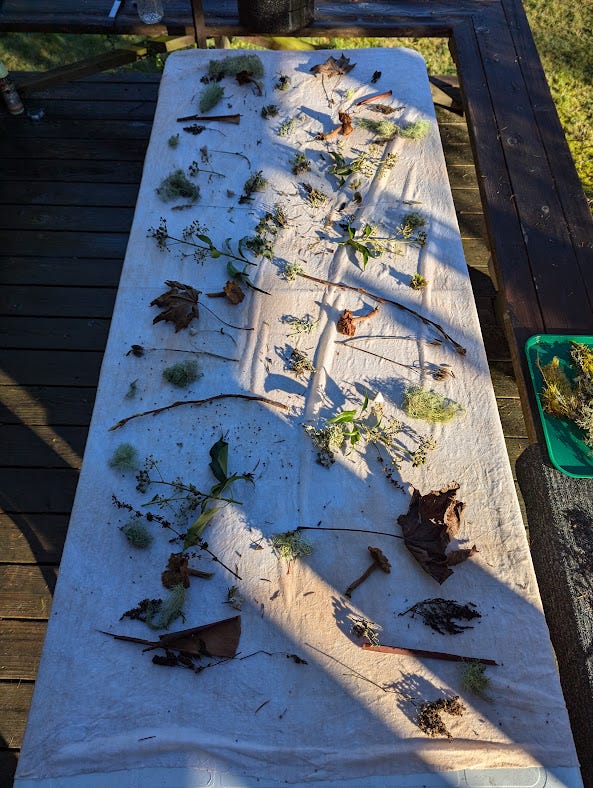

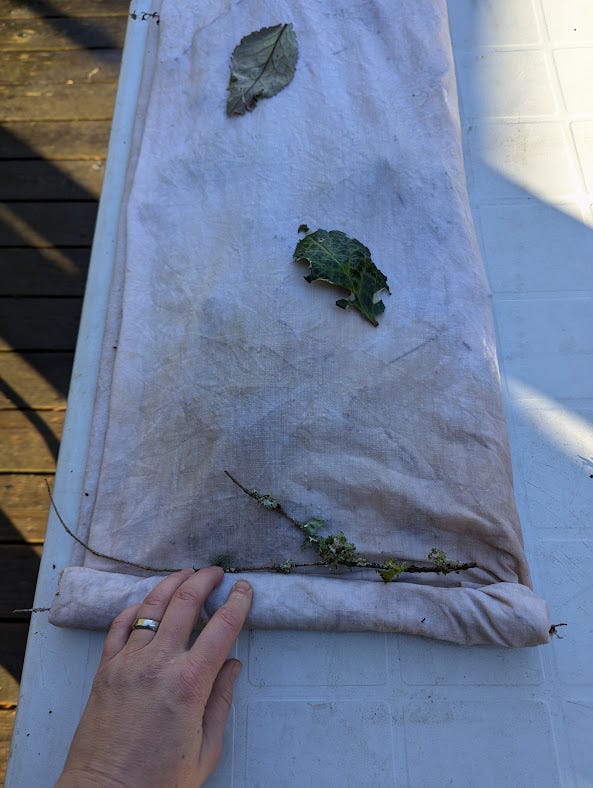
On this swatch I arranged lichen, moss, ivy berries, leaves, mushrooms, and other random decayed matter. I added a splash of eucalyptus vinegar to the pot—I had used vinegar to soften and “open up” dried eucalyptus leaves I already had in a vase at home, to use on another swatch. Simmered for 2 hours.
Here are the results:

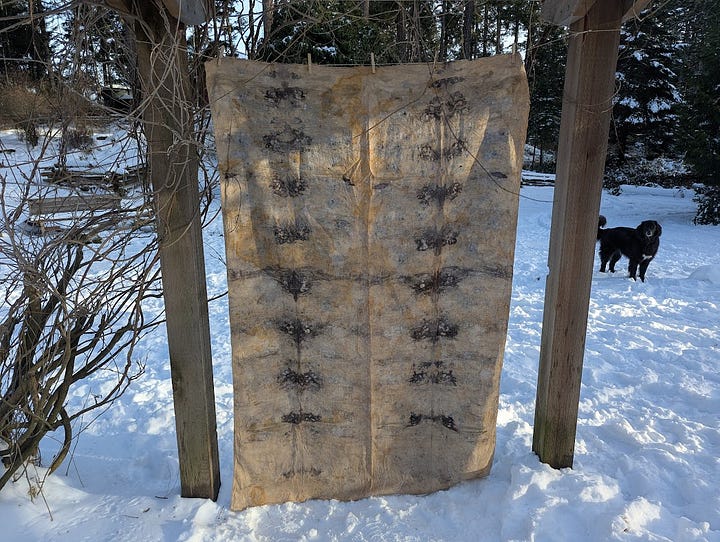
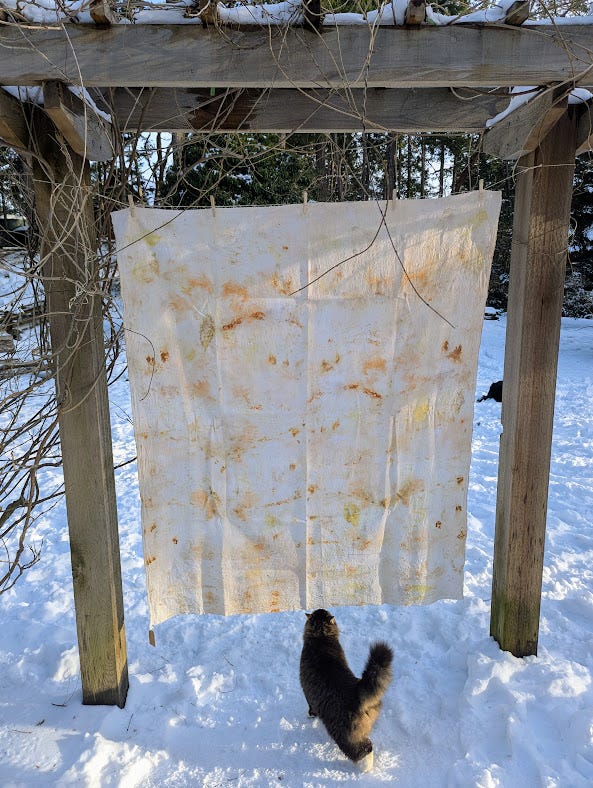

I love how the rusty nails interacted with Swatch #5 to create such a moody effect. When I hung this piece up, our LGD went nuts and wouldn’t stop barking at it. Likewise, when my young son saw the swatches hanging to try, he said, “these look like dead things.” That was a truly proud moment, because I think they’re all so beautiful. I’m still shocked that the materials found over winter were able to produce such results.
I’m not sure what I’m going to use these swatches for, but swatches #1 and #2 are being used for the SSNAP submission quilt, and I used half of swatch #3 to make a custom binding for that piece.
MANY THANKS and kudos to Amber Joy, who advised me on this project, as well as Maiwa for providing free videos and resources that helped me immensely. Also India Flint’s book was a super inspiration. Please check out all of their resources because they actually know what they’re doing, while I have simply achieved a series of happy accidents :)
Let me know if you have any questions in the comments!
All my writing at Paper Town is free—no subscriptions, no paywalls. If you find something here that resonates with you, consider buying me a coffee as a way to support the work. It’s completely optional, but always appreciated!



